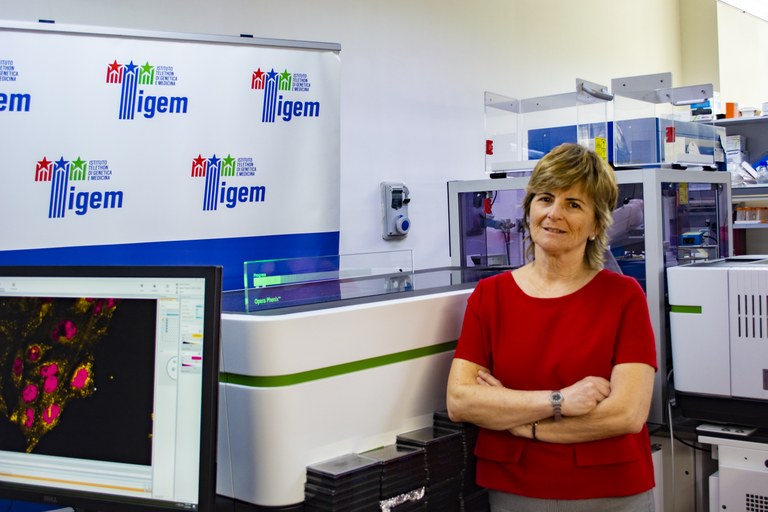From Psoriasis to Lowe Syndrome: TIGEM Accelerates Drug Repurposing to Treat Rare Diseases

At the Telethon Institute of Genetics and Medicine (TIGEM), the journey from the lab bench to the patient’s bedside is not a dream—it’s a mission. That mission has recently taken a major leap forward with the launch of a Phase II clinical trial for Lowe syndrome, a devastating and ultra-rare genetic disorder with no current cure. The trial will evaluate Piclidenoson, a molecule already in advanced-stage trials for psoriasis, as a potential therapy to counteract the severe kidney dysfunction associated with the syndrome.
This groundbreaking effort is the result of years of visionary leadership and scientific excellence at TIGEM, led by Antonella De Matteis, Professor of Biology at the University Federico II of Naples and Group Leader at TIGEM, and Leopoldo Staiano, Group Leader of Cell Biology and Disease Mechanisms program at TIGEM. Together, they have shaped a research environment where cutting-edge science and clinical translation go hand in hand. Their joint work laid the foundation for what has become a milestone in rare disease therapeutics: transforming a molecule intended for a common disease into a hope-filled candidate for a much rarer one.
The discovery of Piclidenoson’s potential effect in Lowe syndrome emerged from a high-throughput screening of over 1,300 compounds conducted by De Matteis’ team. Through deep investigation into the mechanisms of cellular trafficking—one of her areas of global expertise—they identified a precise molecular target that plays a key role in the progressive kidney damage caused by the disease. Validation in both cell and animal models confirmed that Piclidenoson could restore critical renal functions.
Key to transforming this discovery into a clinical reality was the strategic agreement with the Israeli biotech company Can-Fite, which owns the rights to Piclidenoson. The negotiation and formalization of this agreement were made possible through the tireless efforts of Annamaria Merico from the Fondazione Telethon Business Development Office (BDO). Thanks to this collaboration, and to the fact that Piclidenoson has already undergone safety testing for psoriasis, the team was able to fast-track the development timeline, bypassing early clinical phases and moving directly into a Phase II trial.
The 12-month trial is being conducted at the Bambino Gesù Children's Hospital-IRCCS in Rome, under the coordination of Dr. Francesco Emma, Head of the Department of Nephrology and Dialysis, in collaboration with AISLO (the Italian Lowe Syndrome Association). It will initially involve five patients and evaluate the drug’s safety and effectiveness in improving renal function.
At the center of the discovery pipeline that made this repurposing possible is TIGEM’s High Content Screening (HCS) Facility, led by Diego Medina. This state-of-the-art platform enables automated imaging and analysis of thousands of drug candidates in disease models, generating high-quality data that accelerates the identification of promising compounds. It was in this facility that Piclidenoson’s potential was first spotted, confirming the critical role of advanced technologies in bridging basic science and clinical application.
For rare diseases like Lowe syndrome, drug repurposing is more than a strategy—it’s a necessity. Developing new drugs from scratch is costly, risky, and time-consuming. Repurposing offers a faster, more cost-effective alternative, especially when dealing with small patient populations who can’t afford to wait a decade for treatment options to materialize. In this case, a molecule developed for a widespread skin condition may become the first real hope for patients with a life-threatening genetic disease.
“This result reaffirms the importance of investing in basic research,” said Antonella De Matteis. “But it also shows what’s possible when scientific excellence is matched with the right strategic vision and operational support. That’s what we’ve built at TIGEM—and this is just the beginning.”
